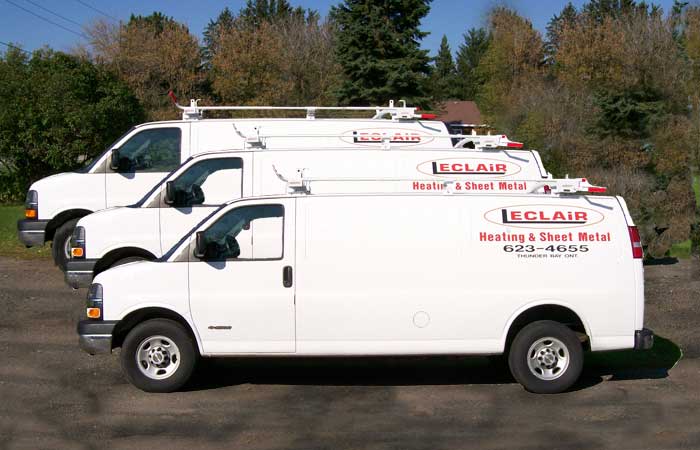



Authorized TRANE Dealer

Copyright ©
Leclair Heating & Sheet Metal.
All rights reserved.
2613 McGregor Pl. Thunder Bay, Ontario P7E 5G9
Phone: (807) 623-4655
Leclair Heating & Sheet Metal.
All rights reserved.
2613 McGregor Pl. Thunder Bay, Ontario P7E 5G9
Phone: (807) 623-4655
Tips on operating your HVAC system
Trane systems are designed to provide optimal efficiency and comfort. Now it's time to do the same to your home. Here are some things you can do around the house to optimize the operation of your system, as well as the comfort inside your home.
Heating
- Locate the thermostat on an inside wall away from windows and doors.
- Set the thermostat as low as comfort permits. Each degree over 20°C (68°F) can add 3% to the amount of energy needed for heating.
- People generate heat. So lower the thermostat a degree or two when expecting a large group of guests.
- In the heating season, don't run kitchen and bath exhaust fans longer than necessary.
- Have a programmable set-back thermostat installed if you lower the temperature at bedtime.
Cooling
- Set the thermostat as high as comfort will permit.
- Make sure attics are adequately ventilated to relieve heat buildup. If necessary, improve airflow by adding or enlarging vents.
- When building a new house or renovating an old one, choose light-colored roof shingles to reflect more of the sun's heat.
- During moderate weather, don't use the air conditioner unnecessarily.
- Draw blinds or drapes to block the sunlight during the hottest part of the day.
- Install awnings over windows exposed to direct sunlight.
- In the cooling season, don't run kitchen and bath exhaust fans longer than necessary.
- Don't place lamps, TV sets or other heat-producing devices beneath a wall-mounted thermostat. Rising heat from that equipment may cause the air conditioning system to over cool your house.
Insulation
- Make sure your home is properly insulated. This is the single most important step in conserving energy. Thermal insulation should be specified in terms of thermal resistance (R-values). R-30 (10") is the minimum recommended for ceilings, and R-11 (3½")is the minimum for exterior walls and floors over unheated areas. In colder climates, consider additional insulation.
- Infiltration of humid outside air is your heating and air conditioning system's worst enemy — it could account for 15% to 30% of air conditioning energy requirements. Find the places where air can sneak into the home and plug them with caulking, weather-stripping or plastic. Also, weather-strip and caulk around all entrance doors and windows.
- Cut heat transfer through your windows by 40% to 50% with double-glazing (two panes of glass separated by a sealed air space) and low-e glass.
- Use wood- or metal-frame storm windows even if single-glazed windows are high quality. The extra layer of glass and the layer of still air will cut heat transfer considerably.
- Install storm doors at all entrances to your house.
- Keep all windows and doors closed.
- Remember that by increasing the glass area, you increase the amount of heat added in summer and lost in winter.
- Make sure fireplaces have tight-fitting dampers, which can be closed when the fireplace is not in use.

